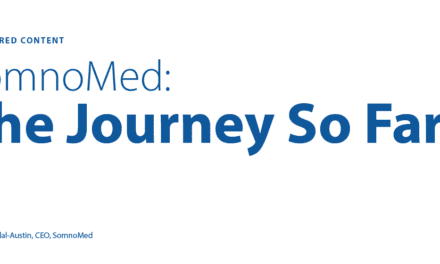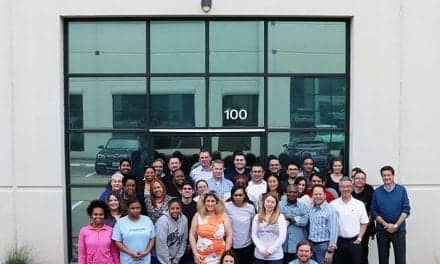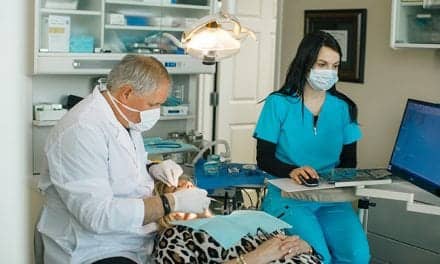A dental sleep medicine practitioner shares 5 years of data that show moderate and severe OSA patients can achieve successful outcomes with MADs. He calls for greater awareness of oral appliance utility.
The question about when a mandibular advancement device (MAD) should or could be used is much debated. Various sleep health professionals and insurance providers have rendered opinions as to what they believe is the most effective means for managing patients with obstructive sleep apnea (OSA).
The status quo option to manage OSA is CPAP [continuous positive airway pressure]. Often CPAP is the correct choice; if the patient is compliant, CPAP is indisputably the most effective means to manage OSA. But compliance with CPAP is most often fair at best.
I have often wondered: Why isn’t the option of a MAD typically made available to patients from the onset of their diagnosis when compliance with a MAD has been shown to be subjectively higher than a CPAP? Clearly, the biggest barrier is that MADs are not as effective as CPAP. At first, I also suspected one of the following concerns might be a large barrier to physicians for referral of an MAD as a first-line treatment: changes in the bite; temporomandibular joint pain/jaw discomfort; insurance/Medicare coverage; or cost of a nonreturnable device.
But I find that even after addressing and satisfying these concerns with physicians who are considering referring their OSA patients for MADs, there is still hesitation. So I have come to believe that the primary barrier is related to the perception that MADs have a limited application—that is, the idea that MADs only work for patients with mild OSA. For patients with an apnea-hypopnea index (AHI) 15 or over, many sleep professionals have the mistaken belief that MADs cannot be efficacious.
In my experience, MADs should be considered for OSA patients without severity restrictions. This is consistent with the Clinical Practice Guideline for the Treatment of Obstructive Sleep Apnea and Snoring with Oral Appliance Therapy: An Update for 2015, which states, “We recommend that sleep physicians consider prescription of oral appliances, rather than no treatment, for adult patients with obstructive sleep apnea who are intolerant of CPAP therapy or prefer alternate therapy.”1 It is also consistent with several published peer-reviewed case reports and studies.2-3
I have also found that many health professionals have limited experience and awareness of the objective efficacy of a properly titrated MAD. So to allay efficacy concerns, about 5 years ago I began to keep track of diagnostic polysomnography (PSG) AHI (pre-MAD) as well as titration MAD AHI data in my patient population.
Methods
Most of the oral appliance candidates referred to me during this time were CPAP failures; a few were newly diagnosed patients who requested an alternate therapy. The patients who were then compliant with managing their OSA with a MAD, after achieving a subjective level of maximum medical improvement (MMI), would return to the referring physician for a titration PSG to objectify the MAD’s efficacy. These titration PSGs were performed at many different sleep centers, scored by numerous registered sleep technologists, and interpreted by various board-certified sleep physicians. Because most of my patients are Medicare patients, the MADs were mostly Herbst devices (covered by Medicare) though about 10% were other styles of MADs.
Limitations
Because this was not a double-blinded randomly controlled trial, this data may be considered less than a scientific level of research. Nevertheless, the objective overall results of the titration PSGs merit examination because it provides evidence that MADs can and do effectively manage all severity levels of OSA.
Results
There were 306 patients with an AHI of 15 or greater (that is, moderate to severe OSA) who completed the sequence of having a diagnostic PSG and a follow-up titration PSG to verify and maximize the efficacy of the MAD. The average diagnostic PSG showed an AHI of 36.3/hour. The average AHI after appropriately titrating the device during the PSG was 10.7/hour (see Table 1).
Further breakdown of the studies shows that 154 of these patients were diagnosed with severe OSA (an AHI of 30 or greater). The average AHI of those individuals was 49.0/hour prior during their diagnostic PSG. Once again after achieving a subjective level of MMI, the patient returned for a titration PSG. The average AHI with the MAD for these severe OSA patients was 14.1/hour. See Graph 1 and Graph 2, which highlight the efficacy of MADs with patients diagnosed with severe OSA in 2016 and 2015, respectively.
Discussion
From the data shared in this article, it is more than obvious that there is a role for utilizing MADs in all levels of diagnosed OSA: mild, moderate, and severe. As I was taught, the standard goal of a titration study was to demonstrate at least a 50% reduction in the patient’s diagnostic AHI and have the AHI below 10. Averaging at 10.7 events per hour, the data I have gathered doesn’t achieve the below 10 goal but significant AHI reduction is obvious. Additionally, 97 patients out of the 154 that began with AHIs of 30 or above did achieve an AHI below 10 with their MAD.
Naturally, AHI is not the only criterion by which to judge efficacy of any device (whether CPAP, MAD, or other) used to manage OSA. Other objective data that could be included to further objectify the efficacy of MADs might also be the SpO2 nadir, sleep efficiency, and changes in sleep architecture.
Changing the perceptions of the sleep health professionals is the challenge. At a presentation I gave last year at a state meeting of registered sleep technicians, the vast majority thought that MADs could only be utilized on patients diagnosed with mild OSA. Only a handful were aware that Medicare provided benefits for MADs. A shift in paradigm does not occur easily. Awareness and education efforts about the widely ranging effectiveness of MADs need to be made to all health professionals, as well as patients.
Management of OSA is necessary to reduce the substantial health risk associated with the disorder, such as heart attacks and strokes. Just as vital is protecting the public from the dangers of the OSA patient driving a vehicle with excessive daytime sleepiness. Not to mention the effects that OSA has on the workplace with decreased productivity due to fatigue and sleepiness. While further research is needed to document the efficacy of MADs in controlled studies, the benefit of dentists referring the patient for a titration PSG to objectively document the efficacy of the MAD is significant.
The impact on our healthcare system can be affected significantly by helping the healthcare professional to see the potential benefits of utilizing a MAD to manage OSA. From the results we have seen in our practices, MADs can be incredibly effective devices in the treatment of all levels of OSA. Ruling out the use of a MAD based upon outdated perceptions needs to be changed.
Kenneth A. Mogell, DMD, DABDSM, has practiced general, neuromuscular, and cosmetic dentistry for over 25 years. In 2013, Mogell became the first Diplomate of the American Board of Dental Sleep Medicine in Palm Beach County and one of only three in the state of Florida. He is a member of Sleep Review’s editorial advisory board.
REFERENCES
1. Ramar K, Dort LC, Katz SG, et al. Clinical practice guideline for the treatment of obstructive sleep apnea and snoring with oral appliance therapy: an update for 2015. J Clin Sleep Med. 2015;11(7):773–827.
2. Doff MH, Hoekema A, Wijkstra PJ, et al. Oral appliance versus continuous positive airway pressure in obstructive sleep apnea syndrome: A 2-year follow-up. SLEEP. 2013;36(9):1289-96.
3. Takaesu Y, Tsuiki S, Kobayashi M, et al. Mandibular advancement device as a comparable treatment to nasal continuous positive airway pressure for positional obstructive sleep apnea. J Clin Sleep Med. 2016;12(8):1113-9.










Thank you for the informative article your results of MAD therapy demonstrate the life changing effect that can still be rendered to Thea patients that cannot or will not consider CPAP.
I have been using this device for almost two years. It is nothing short of amazing. It has enhanced the quality of my sleeping while allowing those around me to get a good night’s sleep. I could not tolerate the CPAP–claustrophobia, dry eyes, you name it! I send everyone to Dr. Mogell. He’s the best. I’m just sorry I moved to California!